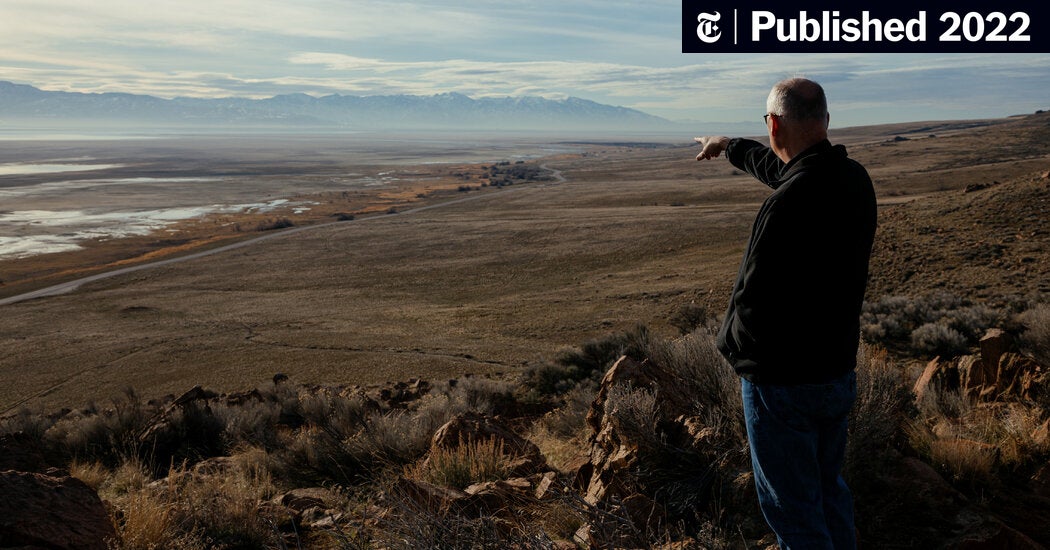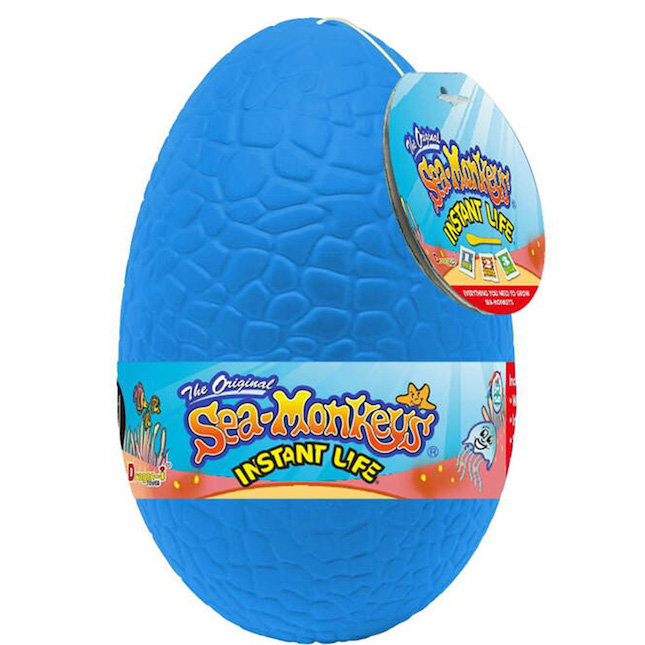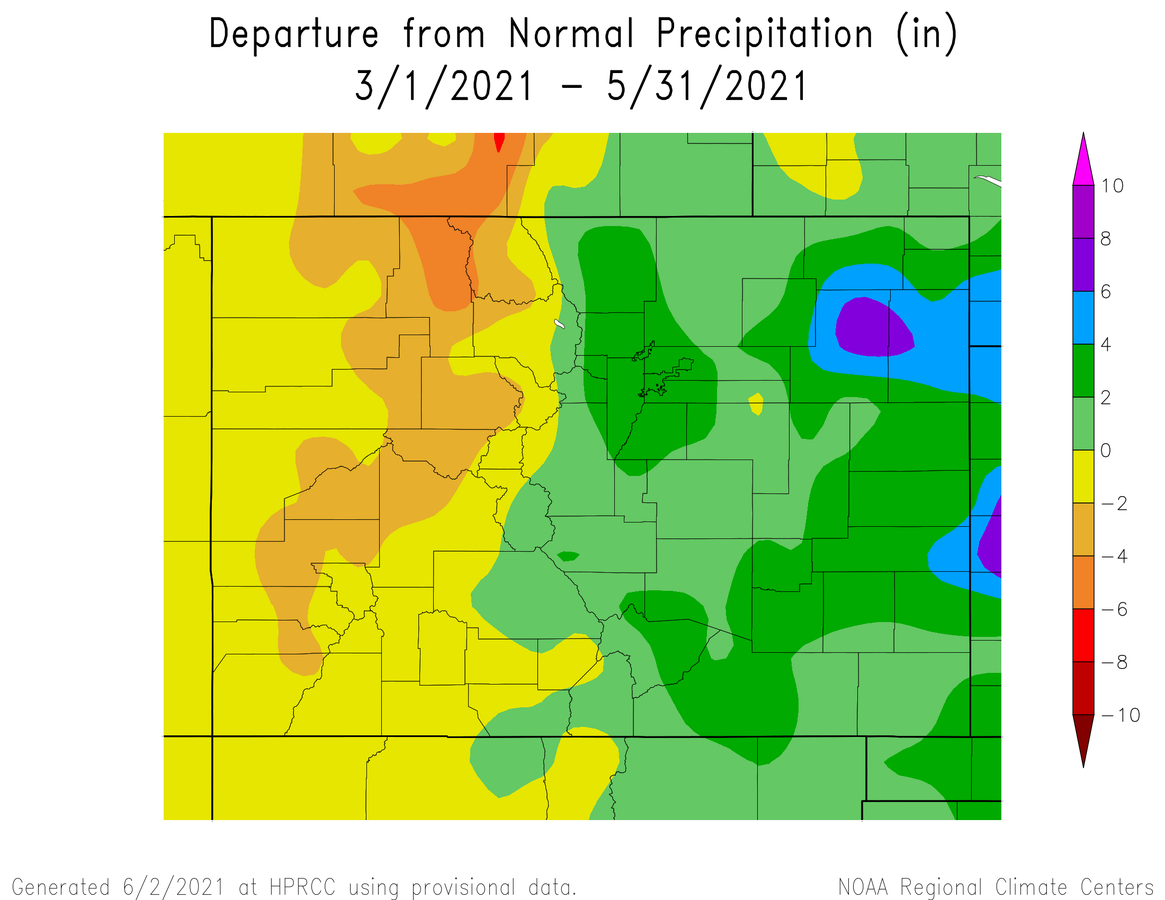If the Great Salt Lake, which has already shrunk by two-thirds, continues to dry up, here’s what’s in store:
The lake’s flies and brine shrimp would die off — scientists warn it could start as soon as this summer — threatening the 10 million migratory birds that stop at the lake annually to feed on the tiny creatures. Ski conditions at the resorts above Salt Lake City, a vital source of revenue, would deteriorate. The lucrative extraction of magnesium and other minerals from the lake could stop.
Most alarming, the air surrounding Salt Lake City would occasionally turn poisonous. The lake bed contains high levels of arsenic and as more of it becomes exposed, wind storms carry that arsenic into the lungs of nearby residents, who make up three-quarters of Utah’s population.
“We have this potential environmental nuclear bomb that’s going to go off if we don’t take some pretty dramatic action,” said Joel Ferry, a Republican state lawmaker and rancher who lives on the north side of the lake.
As climate change continues to cause record-breaking drought, there are no easy solutions. Saving the Great Salt Lake would require letting more snowmelt from the mountains flow to the lake, which means less water for residents and farmers. That would threaten the region’s breakneck population growth and high-value agriculture — something state leaders seem reluctant to do.
Advertisement
Continue reading the main story
Utah’s dilemma raises a core question as the country heats up: How quickly are Americans willing to adapt to the effects of climate change, even as those effects become urgent, obvious, and potentially catastrophic?
The stakes are alarmingly high, according to Timothy D. Hawkes, a Republican lawmaker who wants more aggressive action. Otherwise, he said, the Great Salt Lake risks the same fate as California’s Owens Lake, which went dry decades ago, producing the worst levels of dust pollution in the United States and helping to turn the nearby community into a veritable ghost town.
“It’s not just fear-mongering,” he said of the lake vanishing. “It can actually happen.”
A modern oasis, under threat
Say you climbed into a car at the edge of the Pacific and started driving east, tracing a line across the middle of the United States. After crossing the Klamath and Cascade mountains in Northern California, green and lush, you would reach the Great Basin Desert of Nevada and western Utah. In one of the driest parts of America, the landscape is a brown so pale, it’s almost gray.
But keep going east, and just shy of Wyoming you would find a modern oasis: a narrow strip of green, stretching some 100 miles from north to south, home to an uninterrupted metropolis beneath snow-capped mountains, sheltered under maple and pear trees. At the edge of that oasis, between the city and the desert, is the Great Salt Lake.
Advertisement
Continue reading the main story
Utahns call that metropolis the Wasatch Front, after the 12,000-foot Wasatch Range above it. Extending roughly from Provo in the south to Brigham City in the north, with Salt Lake City at its center, it’s one of the fastest-growing urban areas in America — home to 2.5 million people, drawn by the natural beauty and relatively modest cost of living.
That megacity is possible because of a minor hydrological miracle. Snow that falls in the mountains just east of Salt Lake City feeds three rivers — the Jordan, Weber, and Bear — which provide water for the cities and towns of the Wasatch Front, as well as the rich cropland nearby, before flowing into the Great Salt Lake.
Until recently, that hydrological system existed in a delicate balance. In summer, evaporation would cause the lake to drop about two feet; in spring, as the snowpack melted, the rivers would replenish it.
Ima
Now two changes are throwing that system out of balance. One is explosive population growth, diverting more water from those rivers before they reach the lake.
Climate Forward There’s an ongoing crisis — and tons of news. Our newsletter keeps you up to date. Get it in your inbox.
The other shift is climate change, according to Robert Gillies, a professor at Utah State University and Utah’s state climatologist. Higher temperatures cause more snowpack to transform to water vapor, which then escapes into the atmosphere, rather than turning to liquid and running into rivers. More heat also means greater demand for water for lawns or crops, further reducing the amount that reaches the lake.
Advertisement
Continue reading the main story
And a shrinking lake means less snow. As storms pass over the Great Salt Lake, they absorb some of its moisture, which then falls as snow in the mountains. A vanishing lake endangers that pattern.
“If you don’t have water,” Dr. Gillies said, “you don’t have industry, you don’t have agriculture, you don’t have life.”
The salt content in the part of the lake closest to Salt Lake City used to fluctuate between 9 percent and 12 percent, according to Bonnie Baxter, a biology professor at Westminster College. But as the water in the lake drops, its salt content has increased. If it reaches 17 percent — something Dr. Baxter says will happen this summer — the algae in the water will struggle, threatening the brine shrimp that consume it.
While the ecosystem hasn’t collapsed yet, Dr. Baxter said, “we’re at the precipice. It’s terrifying.”
Advertisement
Continue reading the main story
The soil contains arsenic, antimony, copper, zirconium and other dangerous heavy metals, much of it residue from mining activity in the region. Most of the exposed soil is still protected by a hard crust. But as wind erodes the crust over time, those contaminants become airborne.
Clouds of dust also make it difficult for people to breathe, particularly those with asthma or other respiratory ailments. Dr. Perry pointed to shards of crust that had come apart, lying on the sand like broken china.
“This is a disaster,” Dr. Perry said. “And the consequences for the ecosystem are absolutely, insanely bad.”
But metropolitan Salt Lake City has barely enough water to support its current population. And it is expected to grow almost 50 percent by 2060.
Laura Briefer, director of Salt Lake City’s public utilities department, said the city can increase its water supply in three ways: Divert more water from rivers and streams, recycle more wastewater, or draw more groundwater from wells. Each of those strategies reduces the amount of water that reaches the lake. But without those steps, demand for water in Salt Lake City would exceed supply around 2040, Ms. Briefer said.
Advertisement
Continue reading the main story
The city is trying to conserve water. Last December, it stopped issuing permits for businesses that require significant water, such as data centers or bottling plants.

 www.nytimes.com
www.nytimes.com
The lake’s flies and brine shrimp would die off — scientists warn it could start as soon as this summer — threatening the 10 million migratory birds that stop at the lake annually to feed on the tiny creatures. Ski conditions at the resorts above Salt Lake City, a vital source of revenue, would deteriorate. The lucrative extraction of magnesium and other minerals from the lake could stop.
Most alarming, the air surrounding Salt Lake City would occasionally turn poisonous. The lake bed contains high levels of arsenic and as more of it becomes exposed, wind storms carry that arsenic into the lungs of nearby residents, who make up three-quarters of Utah’s population.
“We have this potential environmental nuclear bomb that’s going to go off if we don’t take some pretty dramatic action,” said Joel Ferry, a Republican state lawmaker and rancher who lives on the north side of the lake.
As climate change continues to cause record-breaking drought, there are no easy solutions. Saving the Great Salt Lake would require letting more snowmelt from the mountains flow to the lake, which means less water for residents and farmers. That would threaten the region’s breakneck population growth and high-value agriculture — something state leaders seem reluctant to do.
Advertisement
Continue reading the main story
Utah’s dilemma raises a core question as the country heats up: How quickly are Americans willing to adapt to the effects of climate change, even as those effects become urgent, obvious, and potentially catastrophic?
The stakes are alarmingly high, according to Timothy D. Hawkes, a Republican lawmaker who wants more aggressive action. Otherwise, he said, the Great Salt Lake risks the same fate as California’s Owens Lake, which went dry decades ago, producing the worst levels of dust pollution in the United States and helping to turn the nearby community into a veritable ghost town.
“It’s not just fear-mongering,” he said of the lake vanishing. “It can actually happen.”
A modern oasis, under threat
Say you climbed into a car at the edge of the Pacific and started driving east, tracing a line across the middle of the United States. After crossing the Klamath and Cascade mountains in Northern California, green and lush, you would reach the Great Basin Desert of Nevada and western Utah. In one of the driest parts of America, the landscape is a brown so pale, it’s almost gray.
But keep going east, and just shy of Wyoming you would find a modern oasis: a narrow strip of green, stretching some 100 miles from north to south, home to an uninterrupted metropolis beneath snow-capped mountains, sheltered under maple and pear trees. At the edge of that oasis, between the city and the desert, is the Great Salt Lake.
Advertisement
Continue reading the main story
Utahns call that metropolis the Wasatch Front, after the 12,000-foot Wasatch Range above it. Extending roughly from Provo in the south to Brigham City in the north, with Salt Lake City at its center, it’s one of the fastest-growing urban areas in America — home to 2.5 million people, drawn by the natural beauty and relatively modest cost of living.
That megacity is possible because of a minor hydrological miracle. Snow that falls in the mountains just east of Salt Lake City feeds three rivers — the Jordan, Weber, and Bear — which provide water for the cities and towns of the Wasatch Front, as well as the rich cropland nearby, before flowing into the Great Salt Lake.
Until recently, that hydrological system existed in a delicate balance. In summer, evaporation would cause the lake to drop about two feet; in spring, as the snowpack melted, the rivers would replenish it.
Ima
Now two changes are throwing that system out of balance. One is explosive population growth, diverting more water from those rivers before they reach the lake.
Climate Forward There’s an ongoing crisis — and tons of news. Our newsletter keeps you up to date. Get it in your inbox.
The other shift is climate change, according to Robert Gillies, a professor at Utah State University and Utah’s state climatologist. Higher temperatures cause more snowpack to transform to water vapor, which then escapes into the atmosphere, rather than turning to liquid and running into rivers. More heat also means greater demand for water for lawns or crops, further reducing the amount that reaches the lake.
Advertisement
Continue reading the main story
And a shrinking lake means less snow. As storms pass over the Great Salt Lake, they absorb some of its moisture, which then falls as snow in the mountains. A vanishing lake endangers that pattern.
“If you don’t have water,” Dr. Gillies said, “you don’t have industry, you don’t have agriculture, you don’t have life.”
‘At the precipice’
Last summer, the water level in the Great Salt Lake reached its lowest point on record, and it’s likely to fall further this year. The lake’s surface area, which covered about 3,300 square miles in the late 1980s, has since shrunk to less than 1,000, according to the U.S. Geological Survey.The salt content in the part of the lake closest to Salt Lake City used to fluctuate between 9 percent and 12 percent, according to Bonnie Baxter, a biology professor at Westminster College. But as the water in the lake drops, its salt content has increased. If it reaches 17 percent — something Dr. Baxter says will happen this summer — the algae in the water will struggle, threatening the brine shrimp that consume it.
While the ecosystem hasn’t collapsed yet, Dr. Baxter said, “we’re at the precipice. It’s terrifying.”
The long term risks are even worse. One morning in March, Kevin Perry, a professor of atmospheric sciences at the University of Utah, walked out onto land that used to be underwater. He picked at the earth, the color of dried mud, like a beach whose tide went out and never came back.
Advertisement
Continue reading the main story
The soil contains arsenic, antimony, copper, zirconium and other dangerous heavy metals, much of it residue from mining activity in the region. Most of the exposed soil is still protected by a hard crust. But as wind erodes the crust over time, those contaminants become airborne.
Clouds of dust also make it difficult for people to breathe, particularly those with asthma or other respiratory ailments. Dr. Perry pointed to shards of crust that had come apart, lying on the sand like broken china.
“This is a disaster,” Dr. Perry said. “And the consequences for the ecosystem are absolutely, insanely bad.”
Running out of water, but growing fast
In theory, the fix is simple: Let more water from melting snowpack reach the lake, by sending less toward homes, businesses and farms.But metropolitan Salt Lake City has barely enough water to support its current population. And it is expected to grow almost 50 percent by 2060.
Laura Briefer, director of Salt Lake City’s public utilities department, said the city can increase its water supply in three ways: Divert more water from rivers and streams, recycle more wastewater, or draw more groundwater from wells. Each of those strategies reduces the amount of water that reaches the lake. But without those steps, demand for water in Salt Lake City would exceed supply around 2040, Ms. Briefer said.
Advertisement
Continue reading the main story
The city is trying to conserve water. Last December, it stopped issuing permits for businesses that require significant water, such as data centers or bottling plants.

As the Great Salt Lake Dries Up, Utah Faces an ‘Environmental Nuclear Bomb’ (Published 2022)
Climate change and rapid population growth are shrinking the lake, creating a bowl of toxic dust that could poison the air around Salt Lake City.


